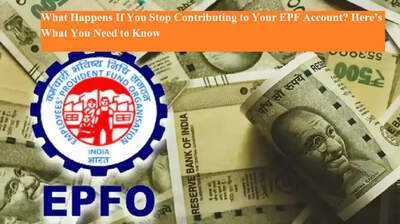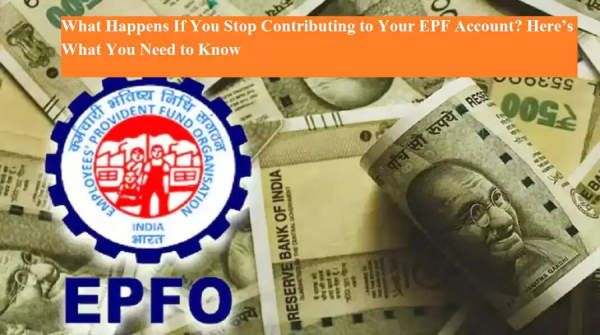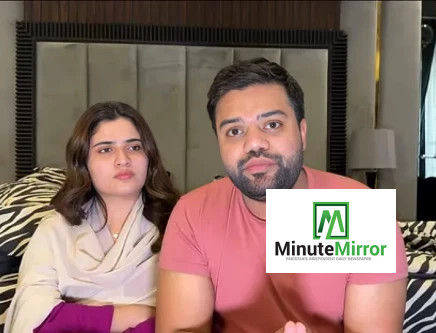

Subheadline: If your EPF account remains inactive for three years, interest stops accruing—but your hard-earned money stays safe until you withdraw it as per eligibility.
Understanding What Happens When EPF Contributions StopThe Employees’ Provident Fund (EPF) is one of the most trusted retirement savings schemes for salaried employees in India. Managed by the Employees’ Provident Fund Organisation (EPFO), it helps workers accumulate a secure financial cushion for their post-retirement years. However, a common question arises — what happens when contributions to your EPF account stop?
This situation often occurs when an employee changes jobs, leaves employment, or joins an organization that doesn’t offer EPF deductions. Understanding the implications of a non-contributing EPF account is essential to safeguard your savings and avoid unnecessary tax complications.
When Does an EPF Account Become Inactive?Even if you stop contributing, your EPF account does not immediately become inactive. It continues to earn interest for a certain period. According to EPFO rules, if no contribution is made for 36 consecutive months (three years), the account is classified as inactive (or dormant).
Once your account becomes inactive, no new interest is credited to it. However, your existing balance remains completely safe with the EPFO. You can withdraw the accumulated funds at any time, subject to the withdrawal eligibility criteria.
This means that while your money won’t grow further through interest, it won’t be lost or confiscated either.
Rules for Withdrawing EPF BalanceIf you have been unemployed for more than two months, you are allowed to withdraw your EPF balance. But there are a few important conditions:
-
If you have not completed five years of continuous service, the withdrawn amount becomes taxable.
-
Both the employee and employer’s contributions — along with accrued interest — are considered part of your taxable income.
-
However, if your EPF remains untouched and continues to earn interest (during the active period), you won’t be required to pay any tax on it.
Therefore, if you’re planning to withdraw funds after resigning, it’s important to assess your total years of service to avoid unexpected tax deductions.
Transferring Your EPF Instead of WithdrawingWhen changing jobs, instead of closing your old EPF account, it’s wiser to transfer your balance to your new employer’s EPF account using your Universal Account Number (UAN).
This ensures:
✅ Seamless tracking of your employment history.
✅ Continued interest on your accumulated funds.
✅ Long-term tax benefits.
✅ Avoidance of multiple inactive accounts.
EPFO allows easy online transfer through its unified portal, making the process simple and paperless. Keeping your EPF active also strengthens your long-term retirement savings.
Inactive Accounts and Safety of FundsMany employees fear losing their EPF balance if their account becomes inactive — but this is a misconception. Even if your EPF account is dormant, your funds remain secure with the EPFO, backed by the Government of India.
However, to claim or withdraw the amount later, it’s essential to ensure your KYC documents and bank details are up to date. Failure to update these can delay or complicate the withdrawal process.
Regularly checking your EPF status and updating your details through the EPFO Member Portal or UMANG app can help you stay informed about your balance and interest accruals.
Why You Should Keep Contributing to EPFStopping EPF contributions can impact your long-term financial health. Here’s why maintaining consistent contributions is beneficial:
-
It ensures a steady retirement corpus with compounding returns.
-
Your savings continue to earn tax-free interest (under Section 80C benefits).
-
It provides financial discipline through mandatory savings.
-
You retain access to EPF-linked benefits such as insurance (EDLI) and pension (EPS).
An inactive or multiple unlinked EPF accounts can lead to confusion and difficulty in tracking funds later. Hence, consolidating and maintaining one active EPF account is always advisable.
Final TakeawayIf you’ve stopped contributing to your EPF account, don’t panic — your savings remain safe. However, remember that after three years of inactivity, no new interest will be added. To maximize benefits, either transfer your funds to your new employer’s EPF account or continue contributing wherever possible.
Keep your KYC details updated, track your account regularly, and make informed decisions about withdrawals or transfers. A well-managed EPF account is not just a retirement fund — it’s a long-term financial safety net that secures your future.
-
Man overcomes family opposition to marry single mother 17 years older

-
Court extends Aroob Jatoi’s bail in gambling app case

-
Career Expert Explains Why End Of Year Is Ideal Time To Apply To Jobs

-
These 5 Very Lucky Zodiac Signs Have The Best Horoscopes On October 25, 2025

-
Haryana: Land turned into gold in this district of Haryana, property prices started touching the sky
